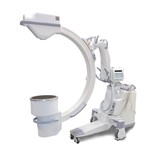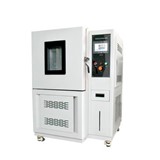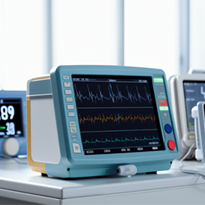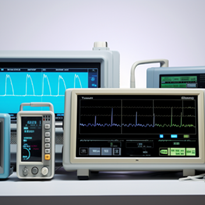I. Introduction
Patient monitors play a crucial role in healthcare settings, providing real-time data on a patient's vital signs and ensuring timely interventions for better patient outcomes. To maintain the reliability and accuracy of patient monitoring systems, it is essential to identify and address common issues that may arise during their operation. This section aims to provide a comprehensive guide to troubleshooting and diagnosing problems with patient monitors, offering valuable insights and expert recommendations for timely resolution.
II. Identifying and Diagnosing Common Problems with Patient Monitors:
A. Understanding typical issues that may arise during patient monitoring:
- Monitor not powering on or failure to boot up
- Display showing abnormal or distorted readings
- Alarms not functioning correctly or constant false alerts
- Connectivity problems affecting data transfer
B. Analyzing monitor display problems and possible root causes:
- Poor image quality due to faulty screen or settings
- Flickering or screen freezing issues related to hardware or software
- Inconsistent readings caused by sensor or calibration problems
C. Investigating irregular readings and their potential sources:
- Assessing sensor placement for optimal contact and accuracy
- Addressing motion artifacts and their impact on readings
- Identifying signal interference from external sources
D. Recognizing calibration and accuracy-related challenges:
- Understanding the importance of regular calibration
- Dealing with calibration drift and necessary adjustments
- Ensuring the accuracy of measurements through periodic validation
III. Addressing Signal Interference and Artifacts in Monitoring Readings
A. Understanding the impact of signal interference on monitoring data:
- Signal interference can distort readings, leading to inaccurate patient information.
- Interference may result from external electronic devices or environmental factors.
- Proper grounding and shielding are essential to minimize signal disruptions.
B. Identifying sources of interference and ways to mitigate them:
- Common sources: nearby electronic equipment, electrical cables, wireless devices.
- Conducting a site survey to identify potential interference culprits.
- Relocating sensitive equipment away from interference sources.
- Using high-quality cables and shielded connectors to minimize disruptions.
C. Handling motion artifacts and their effects on monitoring accuracy:
- Motion artifacts caused by patient movement can affect vital sign readings.
- Securely positioning the patient and sensors can reduce motion-related issues.
- Advanced algorithms and signal filtering can compensate for certain artifacts.
D. Ensuring proper electrode and sensor placement for accurate readings:
- Accurate placement of electrodes and sensors is critical for reliable data.
- Following manufacturer guidelines for electrode/sensor positioning.
- Regularly inspecting and maintaining electrodes to avoid poor contact issues.
- Training healthcare staff on correct placement techniques.
IV. Dealing with Alarms and False Alerts in Patient Monitors
A. Importance of alarms in patient monitoring and patient safety:
- Alarms provide crucial alerts for abnormal vital signs or critical events.
- Rapid response to alarms can prevent adverse patient outcomes.
- Proper alarm management is essential to avoid alarm fatigue.
B. Differentiating true alarms from false alarms:
- False alarms can result from equipment malfunctions or inappropriate settings.
- Healthcare professionals should verify alarms before taking action.
- Implementing alarm confirmation procedures to reduce false alarms.
C. Strategies to reduce false alarms and improve alarm management:
- Adjusting alarm thresholds based on patient conditions and needs.
- Implementing alarm delay settings to minimize transient alarms.
- Using secondary confirmation methods for critical alarms.
D. Guidelines for setting appropriate alarm thresholds:
- Collaborating with healthcare teams to establish evidence-based thresholds.
- Considering patient age, medical history, and condition when setting thresholds.
- Regularly reviewing and updating alarm settings based on feedback and data analysis.
V. Troubleshooting Connectivity and Data Transfer Issues
A. Common challenges related to data transfer and connectivity:
- Slow or intermittent data transmission between the monitor and the central system.
- Inconsistent data display on the monitoring interface due to connectivity issues.
- Data loss or corruption during transfer affecting patient records and monitoring history.
B. Assessing wired and wireless connections for potential problems:
- Check physical connections for loose cables, damaged ports, or improper attachment.
- Analyze network settings and configurations to ensure they comply with monitoring requirements.
- Evaluate wireless signal strength and identify potential sources of interference.
C. Dealing with network-related issues affecting monitor data transmission:
- Identify network congestion and prioritize monitor data traffic for seamless transmission.
- Isolate network segments or devices causing disruptions to the monitoring system.
- Implement Quality of Service (QoS) measures to prioritize critical monitoring data.
D. Ensuring data security and privacy during transmission:
- Utilize encrypted communication channels to safeguard patient data in transit.
- Regularly update security protocols and software to address potential vulnerabilities.
- Limit access to monitoring data based on the principle of least privilege.
VI. Handling Monitor Sensor Malfunctions and Replacement
A. Understanding the role and significance of monitor sensors:
- Sensors play a vital role in collecting accurate patient data for monitoring vital signs.
- Different sensors measure various parameters such as heart rate, blood pressure, oxygen saturation, etc.
- Proper functioning of sensors is crucial for the overall reliability of the patient monitoring system.
B. Detecting sensor malfunctions and their impact on monitoring:
Monitor for inconsistent or erroneous readings that may indicate sensor issues.
- Observe for signs of physical damage or wear and tear on the sensor components.
- Cross-reference data from multiple sensors to ensure accuracy and identify discrepancies.
C. Steps to calibrate and troubleshoot faulty sensors:
- Follow manufacturer guidelines for sensor calibration and verification procedures.
- Use appropriate calibration tools and techniques to calibrate sensors accurately.
- Perform diagnostic tests to identify and isolate specific sensor malfunctions.
D. Considerations for sensor replacement and maintenance:
- Replace malfunctioning sensors promptly with compatible and approved replacements.
- Keep an adequate inventory of spare sensors to avoid disruptions in monitoring.
- Implement a regular maintenance schedule to inspect, clean, and calibrate sensors.
VII. Seeking Technical Support for Complex Monitor System Repairs
A. Knowing when to seek professional technical support:
- Look for persistent or recurring issues that cannot be resolved internally.
- Identify problems beyond the expertise of the facility's technical staff.
- Consider seeking support for intricate system malfunctions or failures.
B. Communicating monitor issues effectively to technical support teams:
- Document the problem description, including error codes or symptoms.
- Provide relevant patient monitor model details and software version.
- Offer a detailed account of actions taken before encountering the issue.
- Avoid emotional language and maintain a professional tone in communication.
C. Evaluating technical support options from the manufacturer:
- Research the manufacturer's technical support offerings and resources.
- Verify if the support team provides phone, email, or online assistance.
- Check if the manufacturer offers on-site support or remote troubleshooting.
- Consider response times and availability of support during critical situations.
D. Understanding warranties and service agreements:
- Review the warranty coverage period for the patient monitor system.
- Understand what issues are covered under the warranty.
- Familiarize yourself with any extended service agreements or contracts.
- Comply with the terms and conditions outlined in the warranty or agreement.
VIII. Preventative Measures to Reduce Monitoring System Downtime
A. Importance of Preventive Maintenance in Reducing Downtime
In order to ensure the seamless and uninterrupted operation of patient monitors, implementing a robust preventive maintenance program is essential. Preventive maintenance involves proactive measures to identify and address potential issues before they escalate into major problems. By adopting a preventive maintenance approach, healthcare facilities can significantly reduce monitoring system downtime, enhance patient safety, and optimize overall healthcare delivery.
- Benefits of Preventive Maintenance:
- Minimizes unexpected equipment failures and downtime incidents.
- Increases the lifespan of patient monitors and related components.
- Improves the accuracy and reliability of monitoring data.
- Enhances patient outcomes by preventing critical system failures.
- Reduces the risk of emergency repairs and associated costs.
B. Creating a Maintenance Schedule and Adhering to It
Establishing a comprehensive maintenance schedule is a fundamental step towards effective preventive maintenance. The schedule should outline specific maintenance tasks, their frequencies, and responsible personnel. Adherence to the schedule is crucial to ensure that maintenance activities are consistently carried out, leaving no room for oversight or neglect.
- Key Components of a Maintenance Schedule:
- Regular inspections of patient monitors, cables, and connectors.
- Calibration checks to maintain accurate readings.
- Software updates and upgrades to address vulnerabilities and bugs.
- Battery checks and replacements to avoid power-related issues.
- Cleaning procedures for monitors and accessories to prevent contamination.
C. Regularly Inspecting and Cleaning Patient Monitors and Accessories
Routine inspections and cleaning play a vital role in maintaining the optimal functionality of patient monitoring systems. Dust, dirt, and other contaminants can interfere with sensors, affect signal quality, and compromise monitoring accuracy. Regular cleaning not only helps prevent downtime but also ensures a hygienic healthcare environment.
- Cleaning Guidelines:
- Use approved cleaning agents and soft, lint-free cloths to clean the monitor surfaces.
- Pay special attention to high-touch areas and buttons.
- Clean and disinfect monitoring accessories, such as leads and electrodes, following manufacturer guidelines.
- Inspect cables and connectors for signs of wear and tear, and replace damaged components promptly.
D. Training Staff on Best Practices for Monitor Care and Handling
A well-trained and knowledgeable staff is an invaluable asset in maintaining patient monitors and reducing downtime. Healthcare facilities should conduct regular training sessions for clinical and technical staff to ensure they are proficient in monitor care and handling protocols.
- Training Focus Areas:
- Proper handling and transportation of patient monitors to prevent physical damage.
- Correct usage of monitoring accessories and cables to avoid premature wear.
- Recognizing and reporting early signs of potential issues to the maintenance team.
- Emergency troubleshooting procedures to respond promptly to critical situations.
In conclusion, maintaining the functionality and accuracy of patient monitors is crucial for effective patient care. This troubleshooting guide offers a comprehensive approach to identifying, diagnosing, and resolving common issues that can arise during the operation of patient monitoring systems. By understanding the various challenges related to power, display, alarms, connectivity, and sensor malfunctions, healthcare professionals can take proactive measures to ensure timely resolution and minimize disruptions in patient monitoring.

























